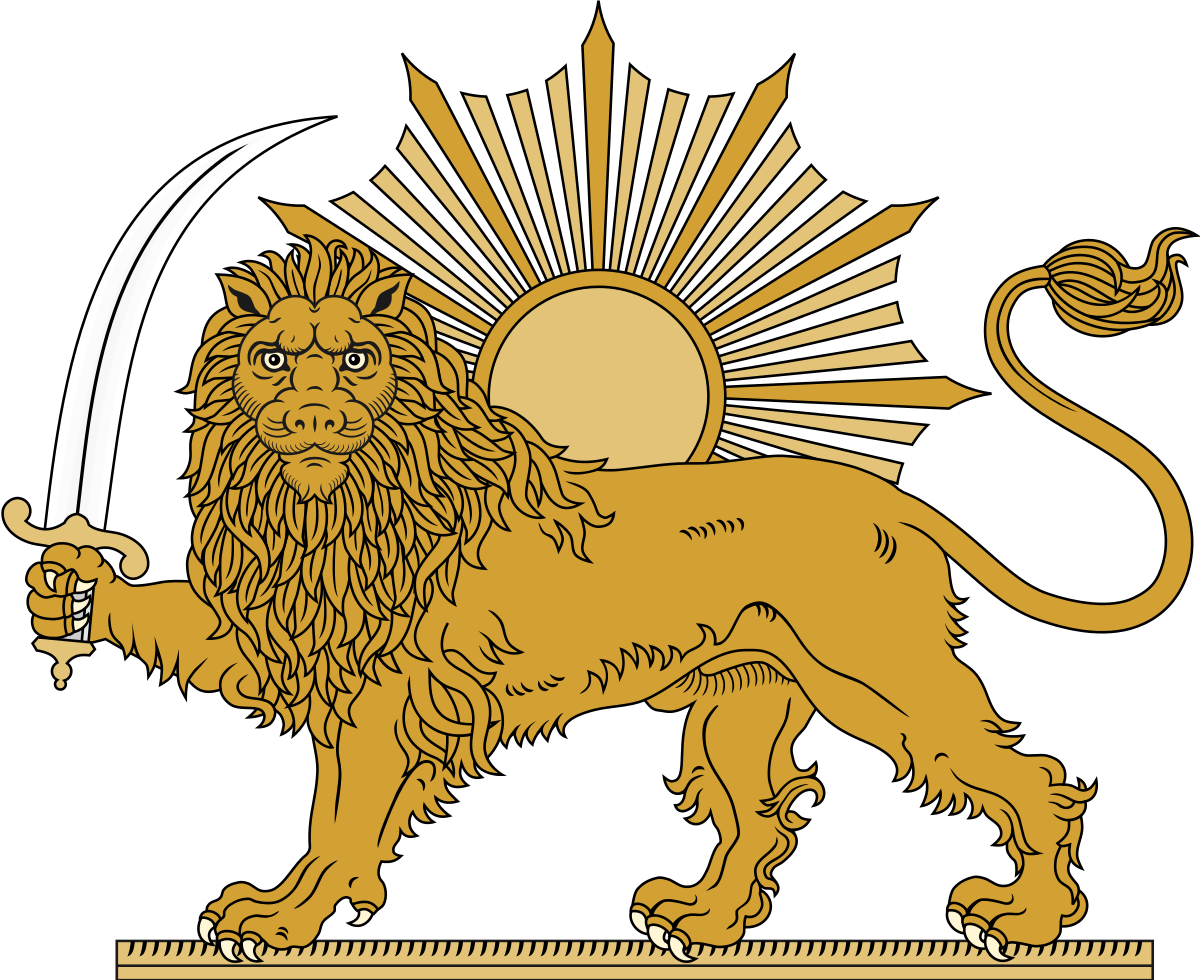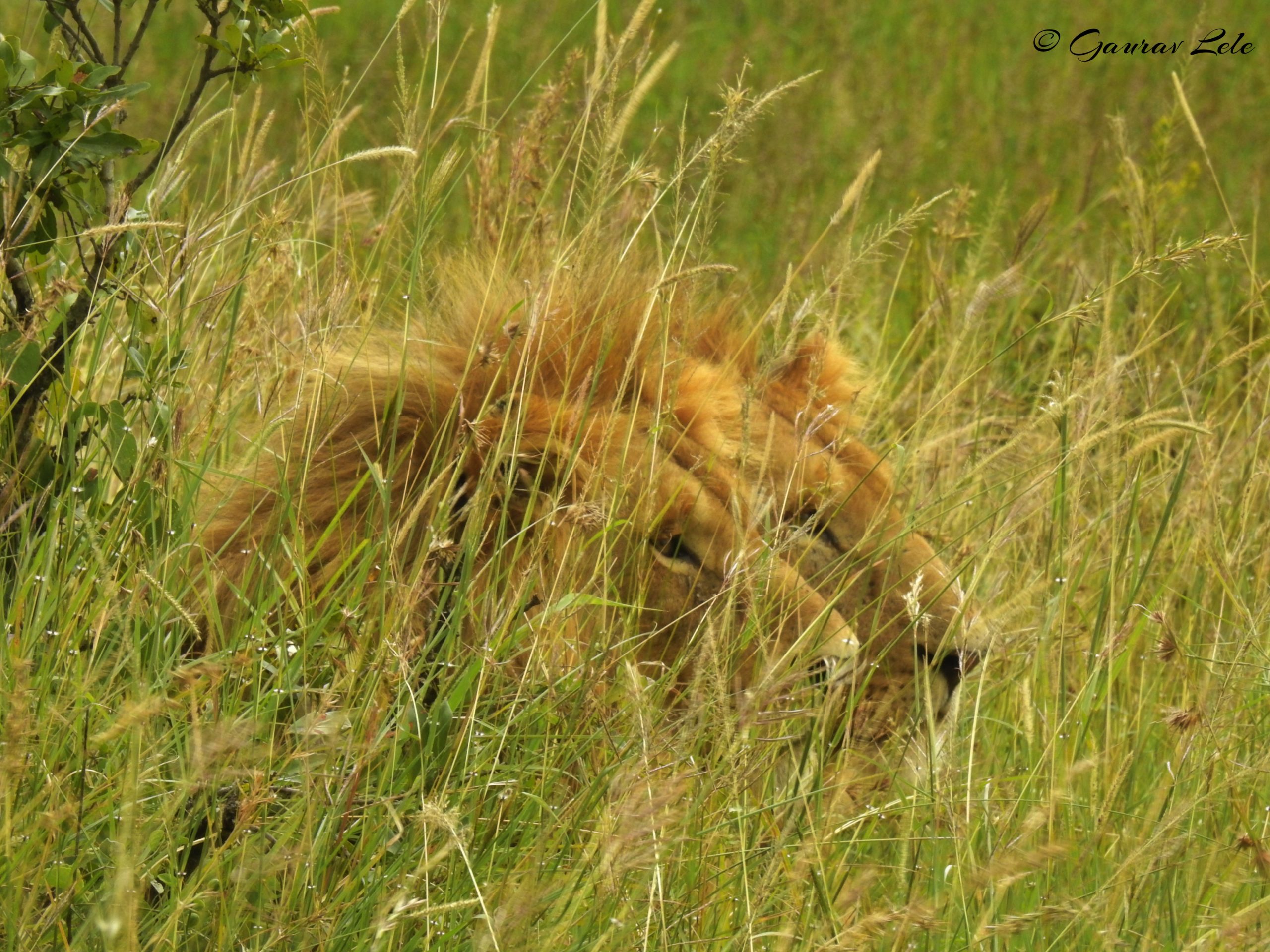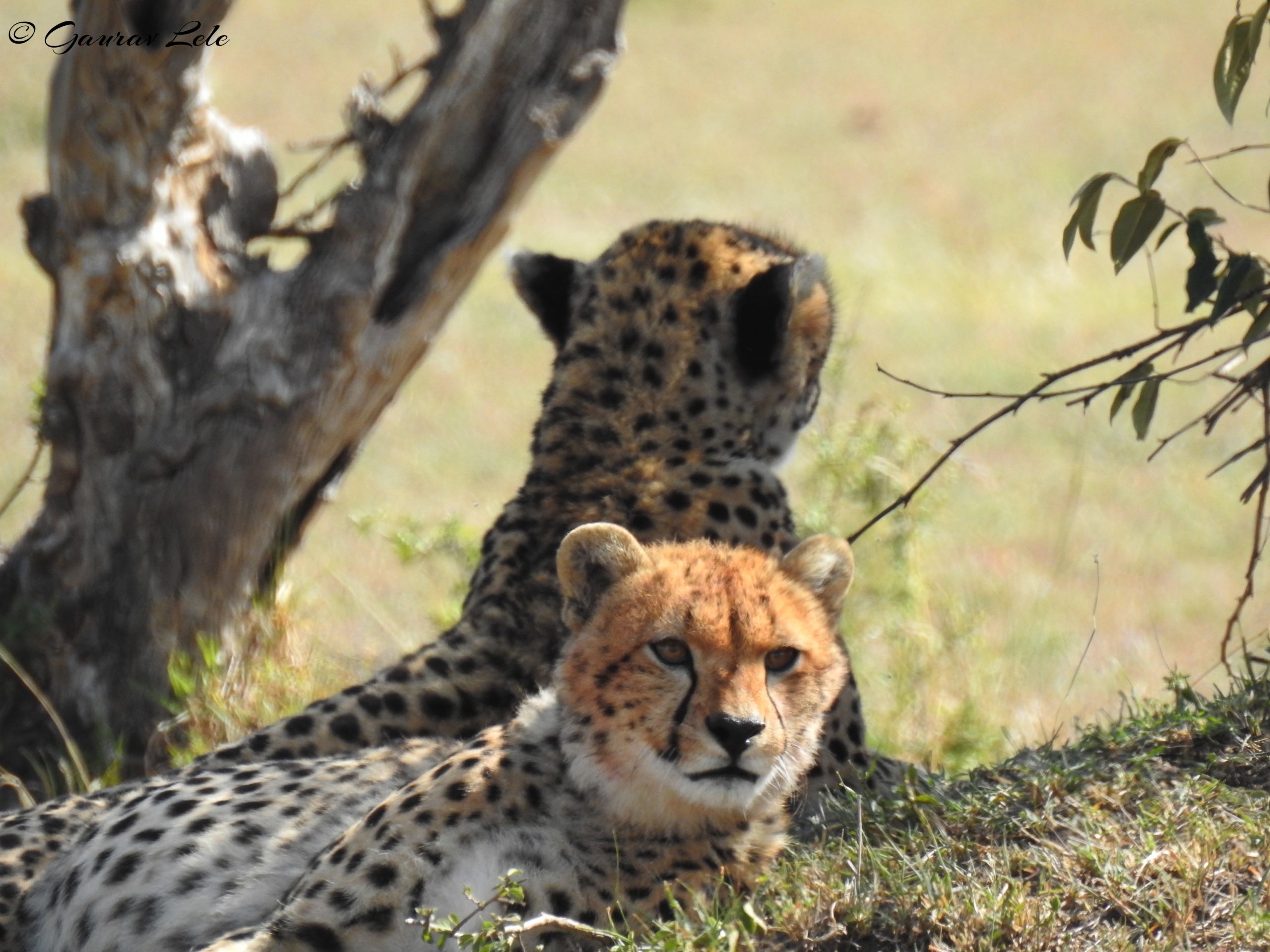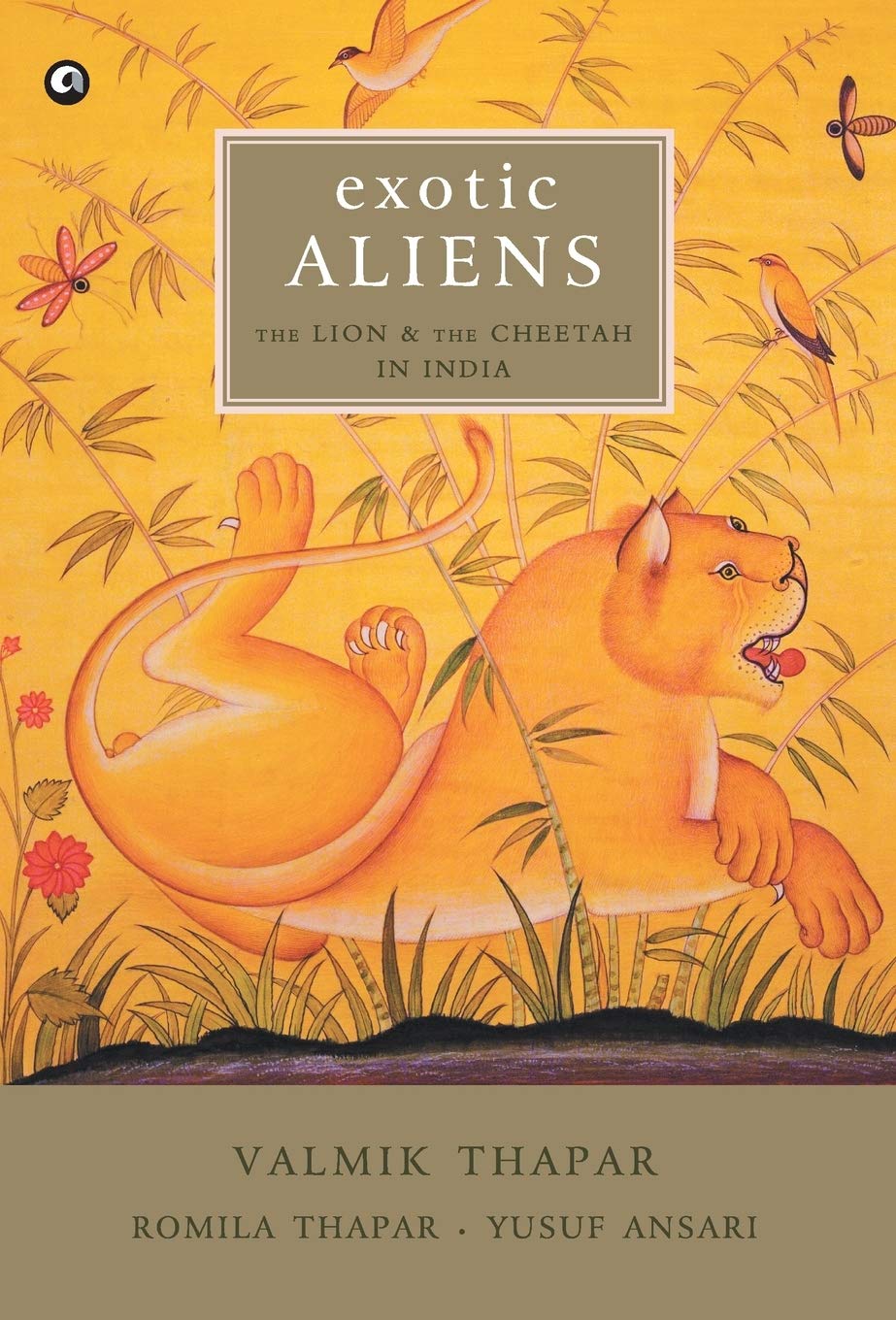The core argument of the book is given away on the cover itself
In the sixteenth century, Dutch traveler Jan Linschoten noted the absence of lions throughout the Indian subcontinent. Two hundred years later, echoing similar comments made by various hunters and observers of Indian wildlife, the British shikari, and writer, Captain Thomas Williamson, emphatically declared: There are no lions in Hindustan. Much the same was said about the cheetah in the region.
Romila Thapar’s argument: Lions have been strongly associated with kingship and lions motifs are spread across the world despite those regions (United kingdom, Sri Lanka) having no indigenous lions. Starting with civilizations of the middle east and how these cultures associated kingship, divinity, and morality with lions, Romila Thapar concludes that no imagery of Indus Valley civilization has lions. The contrast between the Western Bronze cultural emphasis on Lions and the total absence of lions in Indus valley seals (unlike Tigers who are ubiquitous) is profound. (Essentially the same argument is made for the HORSE in Indus valley). Thapar then goes on to speculate that the first interactions, the lands of the Indus had with Lions were after Alexander’s conquest and later Indo Greek rulers. She also points to the Rigveda (which she claims at least was partially composed beyond the Indus in the west) mentions lions and not tigers thought the later Vedas (esp Atharvaveda) mention Tigers more than Lions. Another point she makes, is tigers interactions are much more common in Indian literature (from Mahabharata onwards) while lions are often invoked as symbols.

The most fascinating argument she makes is that farther the land where Lions motifs are present is Lion’s native range (Africa to Iran/Afghanistan/Pakistan in her opinion) the more UnLionish these motifs became. Eg: British and Sri Lankan lions who are almost serpentine.

Yusuf Ansari’s arguments: Yusuf Ansari, a historian of the Mughal era painstakingly goes through the references to the Lions and Cheetahs during the Delhi Sultanate and Mughal period. He points out some discrepancies in accounts of hunting lions in the wilds by the rulers. Mughals considered a Lion hunt an auspicious omen while failure in a lion-hunt a bad omen. His core point is that whatever lions were hunted must be hunted in managed hunting grounds of the Mughals. He also points out that especially during the Mughal times, Indians were importing Lions and Cheetahs in large amounts for imperial gratification. About the Cheetahs, Ansari tells interesting tales about the role of cheetahs in Mughal hunts (as hunting leopards) and delves deep into Jahangir’s fascination with animals.
Valmik Thapar’s arguments: Valmik Thapar, a renowned tiger conservationist whose pet peeve became this book takes the argument further. Valmik speculates than all the lions and cheetahs hunted in from the Mughal to British times were the descendants of imported lions who got away earlier. The most convincing part of his argument is when he delves into the British hunting numbers. Often the number of Lions and Cheetahs hunted by the Brits (who kept the most reliable records) are often less than the number of Tigers and leopards killed by over a factor of 100. The result of indiscriminate hunting was that by the turn of the 20th century India just had a handful of Lions and Cheetahs remaining in wild. The Lions managed to survive thanks to the Nawab of Junagadh, the Cheetahs had no saviors and became extinct in by the 50s. Incidentally, the Nawab of Junagadh story can bolster the argument of the book, as Gir forest today were once the Nawab’s private hunting grounds (where he could’ve easily relocated imported lions ). Additionally, Thapar points out that it could be feasible that the phenotypical differences between Asiatic lions and African lions could be due to inbreeding and not selection. Additionally, Thapar claims that the particularly docile nature of Gir lions – in contrast in Tigers and African lions is also a red herring.

My take:
The book is very well written and fascinating (especially if you are interested in history as well as wildlife). Exotic Aliens is an attempt to convince the readers that Lions and Cheetahs are not indigenous to the Indian subcontinent but were imported for the leisure of kings – especially during the Mughal times. The book contains a lot of hard work especially by Valmik Thapar and Ansari but doesn’t necessarily convince the reader in the end. The argument is strong but still can’t be completely convincing about the Exotic nature of these animals. Had the authors made the point that Lions were never present in India in large numbers (maybe due to competition from Tigers, lack of savannas habitats) and Cheetahs weren’t spread across the country as their habitats were small and fragmented, it would’ve worked. Personally I find it easier to buy that Cheetahs were imported aliens than Lions, but maybe both cases are valid for I can’t deny these arguments as outlandish conspiracy theories though I am not totally convinced by them. I would still rate the book 3/5 as its enjoyable read and will certainly add to the knowledge of the reader.
The Politics:
It doesn’t help the book that it’s the timing of the release was 2013 – when Narendra Modi was on the ascendency with his Gujarat Model. For those interested, a crucial part of his campaign and image of Gujarat is the Gir sanctuary which provides refuge to the last Asiatic Lions of the world. The conservation campaign for Lions was vastly more successful in 2013 than Tigers in India and it was invoked by Modi to the conservationists who looked at him doubtfully. There have been some politics on the ground with the relocation of the Gujarat lions to Kuno in Madhya Pradesh which is yet to materialize. The allegation that this book is an attack at the prestige of lions and by extension, the prestige of Gujarat (and Modi) by the Thapars is not as implausible as it sounds at first glance. Yet I decided to buy and read this book with an open mind as I am fascinated by wildlife back in 2013 itself. To add to this a similar Cheetah reintroduction project is also underway and this project particularly has divided opinions.
A paper The evolutionary history of extinct and living lions was published in May 2020. It adds
First, consistent with previous publications (34, 46), we found no evidence to support the recent claim that the remaining population is not indigenous to the region, but instead were introduced from outside of India (47) as our Indian lions are clearly genetically distinct to the other sampled populations
The argument of the book can still work if one assumes that the source population for Gir Lions is an unknown Ghost which is un-mapped & probably from North Africa / West Asia historically. But that appears to be fitting the data to suite the argument IMO.
Post Script:
I have not visited the Gir forest yet though I have visited a lot of Tiger parks in India. I have also visited Maasai Mara in Kenya where I saw Lions and Cheetahs in the wild. I could write and share more about my wildlife and travel experiences if there is enough interest in the Brown pundits blog. Politics and history are not my first love.



Every speculation in this book, as described in the article, regarding Indian lions has been comprehensively junked by this 2020 paper on the genetics of modern and extinct lions.
https://www.pnas.org/content/117/20/10927
Romila Thapar’s assumptions, deductions and conclusions border on unfiltered idiocy. Should I assume that, the Indian Sloth Bear was introduced to India from external sources as I cannot find any bears on IVC seals? This woman needs to read up on some Statistics 101 – absence of evidence is not evidence of absence.
Again this is the level of historical research that Indians have to put up with for the last 40 years. They will disregard all sources of Indian Puranic records related to lions.
I hadn’t seen that paper. I had read the book back in 2013 itself when this data was more conjecture.
Yes – what it can speculate intelligently is Lions were not as numerous or as widespread in India as tigers especially by the times of Brits. But Romila is the most uncertain in her assertions in this book. Others r much more certain.
I can say with some certainty that maybe political bias affected some extrapolations negatively
I read the paper- it could be argued if one has to argue ( from the Books POV) that these Lions could be imported Persian or Other middle eastern lions who have gone extinct in their native ranges before 20th century. This would be consistent with the data. But that would be twisting data to fit ones narrative i guess.
Did you read the closing remarks along with exhibit 1B? It’s in black and white. The Indian lions are genetically distinct and haven’t been introduced here from anywhere else.
I added that to the review; it says no evidence for that. They can’t conclusively say unless they get ancient dna from india. (Though in all likelihood it’s likely that these r indigenous)
Thank you!
I have been to gir as a kid, remember being excited to see lions. Didn’t see any. Haha.
But I recall hearing they were actually a danger to humans in rural Gujarat and Rajasthan and extermination campaigns carried out.
Even in modern times there have been people killed by lions around gir
https://www.theverge.com/2016/6/16/11954730/lions-killed-humans-sentenced-cage-india
I think sadly with lot of large predators extinction due to competition with humans it’s the real answer.
Yeah;
“Additionally, Thapar claims that the particularly docile nature of Gir lions – in contrast in Tigers and African lions is also a red herring.”
This is a comparative assessment – not that Gir Lions are docile in objective terms, but for instance, they can be approached on foot (Easier not advisable) unlike tigers or African lions, they don’t gesture the typical aggressive feline responses at tourists.
@GauravL
Where have you learnt to speculate so much with little or no data? Your claims are simply astonishing and make very little to no sense. Now — Gir being a tourist destination — obviously lions will become familiar with humans; they anyways have a very small habitat. This happens in every jungle visited by people; moreover, food given by humans to animals is an obvious problem that Forest officials try to dissuade tourists from indulging in.
BRO,
those aren’t MY SPECULATIONS
– but VALMIK THAPARs – I just stated them in the review and explained further. That’s the view I have also heard from many ppl in wildlife but they can be explained by many reasons as u urself pointed out – not necessarily THAPARs pet view. Rather these r the very reasons I wasn’t impressed by Thapars speculations. But stating it doesn’t mean I am speculating – just merely explaining his position.